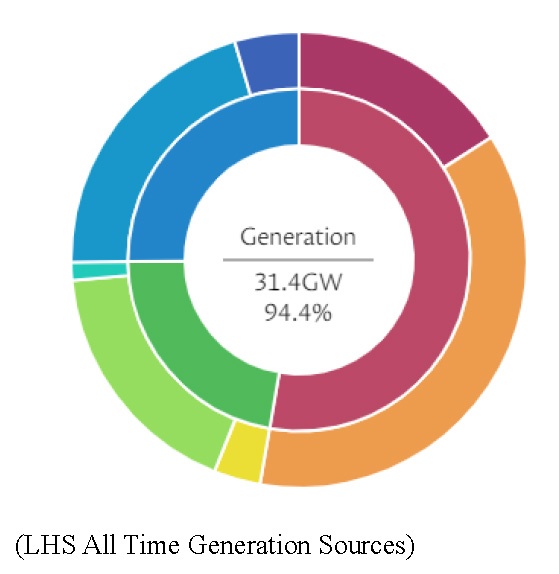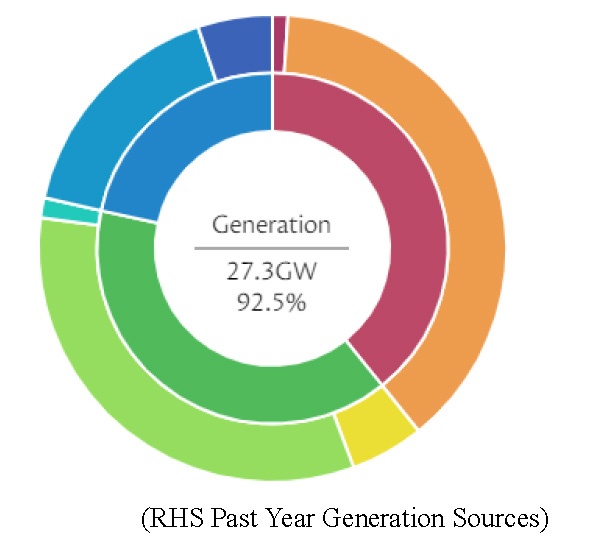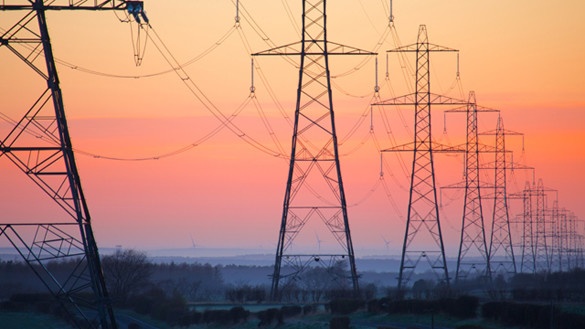The UK has a diverse range of electricity generation that allows us to meet our consumption needs. This can range from wind, solar, nuclear, biomass, gas, fossil fuels or hydro electricity (which is where tidal energy falls into. However, the majority of this source will be stored hydroelectricity.) Where consumption is not met my generation, it is necessary to import electricity from other sources.
In recent years, the goal has been to move away from non-renewable energy sources while still providing a stable supply of electricity to the country. Some sources of energy, known as baseload powers, provide a known and constant source of energy, such as nuclear, fossil fuels and biomass plants. Intermittent sources such as wind and solar need the correct conditions to feed into the national grid. Tidal energy is a great example of a renewable power source that is also a baseload supply, due to the known tidal patterns to occur in a region.
So how has this changed over time? Following from industrialisation, coal provided the vast majority of power before oil started to come into a key role in the 1950s. In 1956 the world’s first nuclear reactor (Calder Hall 1) was opened. From the 60s to the 90s the reliance on coal and oil continued to decrease as nuclear generation grew. From 2000 to the current day, coal and oil is used less and less with an increase in gas, wind, solar and biomass sources.
Lets put some numbers behind this… with the national grids live dashboard! Below is a comparison of the all time data against data from the past year. Can you spot some of the key changes?



There are a few take aways that we can look at here:
- The consumption required has reduced from 31.4GW to 27.3GW.
- This year, we were required to import a larger percentage of our energy (up to 2.2GW of transfer required compared to an all-time average of 1.9GW).
- The use of coal has reduced while use of wind has increased.
- The use of wind energy has increase massively.
You’ll notice that hydroelectric sources has remained broadly the same, in the last year providing only 0.4GW. However, the UK has the potential for up to 32GW of tidal stream, 45GW of tidal barrage and 14GW of tidal lagoons.
Across the world there are nine operational tidal power stations with a combined generation of 0.52GW. Only one of these is is in the UK and is a community owned tidal power generator in Bluemull Sound in the Shetland’s North Isles and produces 0.4MW.
Tidal energy is a growing area of research, interest and understanding and given time, may be a more widely accepted and used renewable energy source. And potentially times are changing….
The government announced in September 2023 that 3.7GW of clean UK energy projects are being funded. This is broken down across 95 projects in onshore wind, solar, geothermal and tidal energy. It was a record number of tidal energy schemes to receive funding from the UK Government!
Sources
- National Grid: Live (iamkate.com)
- https://www.gov.uk/government/news/record-number-of-renewables-projects-awarded-government-funding#:~:text=Press%20release-,Record%20number%20of%20renewables%20projects%20awarded%20government%20funding,equivalent%20of%202%20million%20homes.
- https://www.discoveryuk.com/building-big/the-largest-wind-farm-in-the-world/#:~:text=Today%2C%20there%20are%20believed%20to,the%20amount%20of%20energy%20produced.

